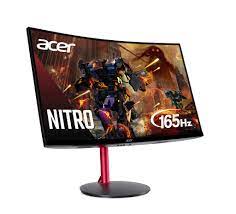When you’re lost in the vast, captivating world of a video game, it’s easy to forget the amount of work, creativity, and technology that went into bringing it to life.
From the smallest mobile game to the most expansive multiplayer online universe, the game development process is a delicate dance of art and science. Let’s take a journey through the intricate stages of game development.
Ideation and Conceptualization
Every game starts with an idea. It could be a new storyline, an innovative game mechanic, or a unique world waiting to be explored. Developers brainstorm, sketch, and discuss concepts to ensure the idea is viable, fun, and engaging.
Pre-production and Planning
Before diving deep into development, a clear plan is crucial. During pre-production:
- Game design document (GDD) is created. This comprehensive document describes the game’s mechanics, characters, world, and other essential features.
- Concept art is produced to visualize characters, environments, and assets.
- Technical specifications, like the game engine and platforms, are decided upon.
Prototype Development
Prototyping is the trial and error stage. Here, developers create a rough version of the game to test its mechanics and overall feel. It helps in identifying what’s fun and what’s not, allowing developers to adjust the direction if needed.
Production
This is where the magic happens! During production:
- Artists design 3D models, animations, and environments.
- Programmers work on the game’s code, implementing mechanics, character behaviors, and interactivity.
- Sound designers curate the game’s audio, from sound effects to background scores.
- Level designers create challenges, paths, and experiences within the game world.
- Each segment, or sprint, of the production phase is tested rigorously to ensure that it aligns with the game’s vision.
Alpha and Beta Testing
After major features are implemented, the game enters the alpha stage. In-house testers play the game, searching for bugs, glitches, and inconsistencies. Feedback is collected, and adjustments are made.
Next, the game progresses to the beta stage, where a broader audience, sometimes including the public, tests it. This phase provides invaluable feedback about gameplay, balance, and potential issues.
Polishing and Optimization
Perfection is an illusion, but that doesn’t stop developers from pursuing it! This phase is about refining every aspect of the game. It could involve enhancing graphics, tweaking character controls for smoother gameplay, or refining the audio to provide an immersive experience. Optimization ensures that the game runs efficiently across various platforms and hardware specifications. It’s about striking the balance between quality and performance.
Quality Assurance (QA)
QA testers are the unsung heroes of game development. They play the game repetitively, hunting for bugs, errors, or any inconsistencies. Every discovered issue is documented and sent back to the development team for fixing.
Launch
After countless hours of hard work, the game is ready for the world to see. It’s released on chosen platforms, be it PC, console, or mobile. Marketing campaigns, trailers, and promotional events create buzz and anticipation.
Post-launch Support and Updates
The journey doesn’t end at launch. Developers monitor player feedback, patch any emerging bugs, and often release updates or additional content to keep the player base engaged.
Reflection and Future Planning
Once the dust settles, the team reflects on the entire process. They analyze what went well, what could have been better, and use these insights to make the next game even more amazing.
Team Dynamics and Roles
At the heart of every game lies the team that creates it. A successful game development process requires a melange of various talents and expertise. Here’s a deeper dive into some key roles:
- Game Designers: Often seen as the visionaries, they determine the rules, structure, and story of the game. They’re the ones who sketch out the player’s experience.
- Writers: Narrative-driven games rely on writers to flesh out the lore, dialogue, and backstory, creating an emotional connection between players and the game.
- UI/UX Designers: They focus on the user interface and overall user experience, ensuring players can navigate and interact with the game seamlessly.
- QA Specialists: Beyond bug hunting, they also assess the game’s usability, playability, and consistency.
Tools of the Trade
Modern game development leans heavily on software and tools. Some industry stalwarts include:
- Engines: Unreal Engine and Unity are leading platforms, enabling developers to create high-quality games without building everything from scratch.
- Graphics: Software like Blender, Maya, or ZBrush is used to craft the visual assets.
- Audio: Tools like Audacity or FL Studio help sound designers bring auditory life to the game.
Conclusion
For those on the brink of embarking on a game development journey, choosing the right partner can make all the difference. Among the giants and pioneers in the industry, BrandFynder stands tall, offering unparalleled game development process services.
Their commitment to innovation, quality, and pushing the boundaries of interactive entertainment ensures that every game they touch turns into a masterpiece.
As the digital landscape expands, it’s companies like BrandFynder that will lead the charge, bringing forth games that not only entertain but inspire.





